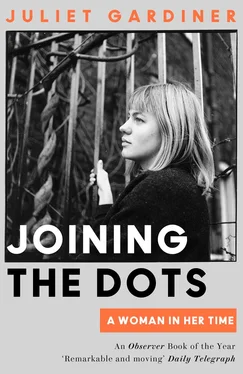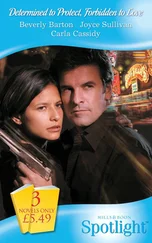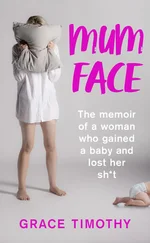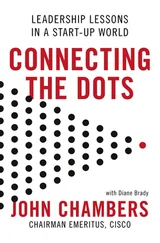It was a courageous and optimistic decision to have a baby at this moment. Apart from the practical difficulties of shortages of baby clothes, nappies, cots, prams, feeding bottles, teats and food, there was the uncertainty of bringing a child into a world when the map to the future had been torn up into jagged pieces. No one could know how long the fighting would go on, or what form it would take.
Shock and uncertainty about the future meant that the birth rate had fallen dramatically in the early months of the war. In 1941 it had reached the lowest point since records began: 13.9 per thousand of the population. When Peggie Phillips found out that she was pregnant in June 1941, she was pleased. But her husband, John, wrote from his army camp cautioning that ‘much as we would like another baby [they already had two daughters] these are hard times, and it would be wisdom to be brutal and cut off this little promise of a life until the world is a little more settled and we could find some sort of assurance that this new little person could be cared for in a decent way’.
This was the strongest argument, he suggested, ‘for you going to the osteopath [an abortionist] … Perhaps the most simple way of looking at it is that we ought to get rid of this “little accident” while it is early days yet and things haven’t gone too far: and we can always have the baby at another time (if it ever gets to be). I hate deciding the way I have.’
Mrs Phillips took her husband’s advice, raided the children’s saving accounts, and on the recommendation of a doctor ‘whose eyes she didn’t really trust’, travelled to a discreet nursing home in Kent where she paid fifty guineas for an illegal abortion. Sadly ‘another time’ never came, as John was killed in the battle of Monte Cassino later in the war.
Many other women had no choice but to be single mothers: they had been widowed by war. On the front page of The Times on the day of my birth, the list of those killed or missing in action is four times longer than the announcement of births. Some women had husbands, fiancés or boyfriends fighting abroad with no hope of home leave until the war was over.
After 1941 the birth rate rose steadily, however. Even in such an unpredictable world there were clearly many who wanted to lay down a marker for the future; to normalise the conventional progress of family life in the midst of chaos, anxiety and despair. Biological clocks ticked louder and youngest children grew older, as did their parents. War was not going to be outwitted, it had to be endured. Life, as usual, had to ‘go on’ and be celebrated in as many ways as possible.
Of course, as an infant I was unaware of the turbulent times into which I had been born. As I slept soundly in a second-hand Silver Cross carriage pram, under an apple tree at the end of the garden, the nation was gripped with the excitement and optimism that accompanied the news of the successful D-Day landings on 6 June 1944; I had no idea of the terror induced by the buzz bombs and V2 rockets that devastated London and parts of the home counties in the following months. Walking by the time VE Day was celebrated on 8 May 1945, I was still unlikely to have been perched in a high chair to tuck into jam sandwiches or trifle at a Victory in Europe street party. This was partly because of my young age, but also because on the whole the home counties did not go in for that kind of communal merriment.
For us there was rarely bunting and flag-waving, and we never dragged a piano into the street so that neighbours could gather round the old joanna and have a rousing sing-song. So often the most potent images of civilian war are of the urban working classes: sheltering in the Underground, emerging from their bomb-battered houses clutching all they could carry of their meagre possessions, waving Union Jacks outside Buckingham Palace or splashing in municipal fountains on VE Day. It was the working classes (some seventy per cent of the population, if assessed by the indices of unskilled or semi-skilled employment) who became the public face of the civilian war.
The middle and lower-middle classes fought a more private war. They were less likely to be found in public air-raid shelters, under archways or down the Tube. They sought protection in Anderson shelters in their own gardens or evacuated themselves as well as their children to safer places in the country or abroad. Celebrations were less exuberant and more self-contained: a glass of Bristol Cream sherry with a few close friends in the front room rather than beer or ginger pop in the street.
‘The day we have waited for for nearly six years, and at last it is here, it is miraculous, exciting, wonderful,’ wrote Madge Martin, the wife of an Oxford vicar, on VE Day. ‘Lovely weather, streets beflagged, happy crowds dancing in the streets, singing everywhere, infectious happiness … packed churches, thankful people.’ She invited a few friends and neighbours into the vicarage, where
we listened to Churchill speak in the afternoon, quietly, no boasting. The King spoke at 9 p.m. We listened to his modest speech and drank sherry happily and rather dazedly … before going out to see the sights … enormous crowds shouting, cheering, dancing, huge bonfires fed by ARP properties, magnesium bombs, great logs of old chairs, tables, ladders etc. with dancing rings of young people circling them, beautiful floodlit buildings, lighted windows, torchlight processions and a good humoured gaiety with no rowdyism … Robert [her husband] and I went about together happier than for years remembering it all for ever. Light after darkness. Thank God for this day of days.
I Don’t You Know There’s a Peace On?
Whatever a person’s class, the dolorous grey cloud of postwar austerity hung over the whole country within days of the end of the war. The wartime excuse for shortages, regulations and bureaucratic inefficiencies – ‘Don’t you know there’s a war on?’ – was inverted almost as soon as the VE Day celebrations were over, the bonfires damped down, the children’s street parties cleared away. ‘Don’t you know there’s a peace on?’ became the ironic, resigned, sometimes bitter question in those early postwar months – one that particularly affected women. Rationing persisted until 1954 when meat was finally taken ‘off the coupon’, and in many cases shortages were more acute than during the war. It was estimated that housewives spent an average of at least an hour every weekday in a queue. Grocers’ shelves were half empty; bread, which had never been rationed during the war, was limited to two large loaves a week of unappetising grey bread adulterated with a high chalk content and, consumers suspected, cattle feed. Strange new products were imported such as blubbery whale meat (advertised as being like steak but in fact with a fishy aftertaste) and barracuda fish, known as Snoek, that no one wanted to eat despite exhortations to mash it with chopped-up spring onions and serve it on toast, so it was eventually fed to cats, some domestic, some feral, living in roaming posses on bomb sites.
Manufacturers with nothing to sell valiantly tried to keep their brand names in the public eye for the day when they did. ‘Won’t it be nice when we have lovely lingerie, and Lux to look after our pretty things? Remember how pure, safe Lux [soap flakes] preserved the beauty of delicate fabrics?’; ‘Soon all Heinz 57 varieties will be coming back into the shops, one by one’; ‘Unfortunately, Cadburys are only allowed the milk to make an extremely small quantity of chocolate … so if you are lucky enough to get some, do save it for the children …’
The 1946 exhibition Britain Can Make It , staged at the Victoria and Albert Museum – the windows of which had been blown out by bomb blast, hastily replaced by requisitioning all glass production for the purpose – was designed to show that the country could again establish itself as a manufacturing nation, turning swords into ploughshares, or rather Spitfire parts into ashtrays. But though one and a half million people flocked from all over Britain to queue for a glimpse of the phoenix rising, the exhibition was soon wryly mocked as ‘But Britain Can’t Have It’ since most British production went for export to repay the staggering debt of $3.7 billion that the country owed to the United States. As Mollie Panter-Downes, London correspondent of the New Yorker , wrote, ‘the factories which people hoped would soon be changing over to the production of goods for the shabby, short-of-everything home consumers, are having to produce goods for export. The government will have to face up to the job of convincing the country that controls and hardships are as necessarily a part of a bankrupt peace as they were of a desperate war.’
Читать дальше












